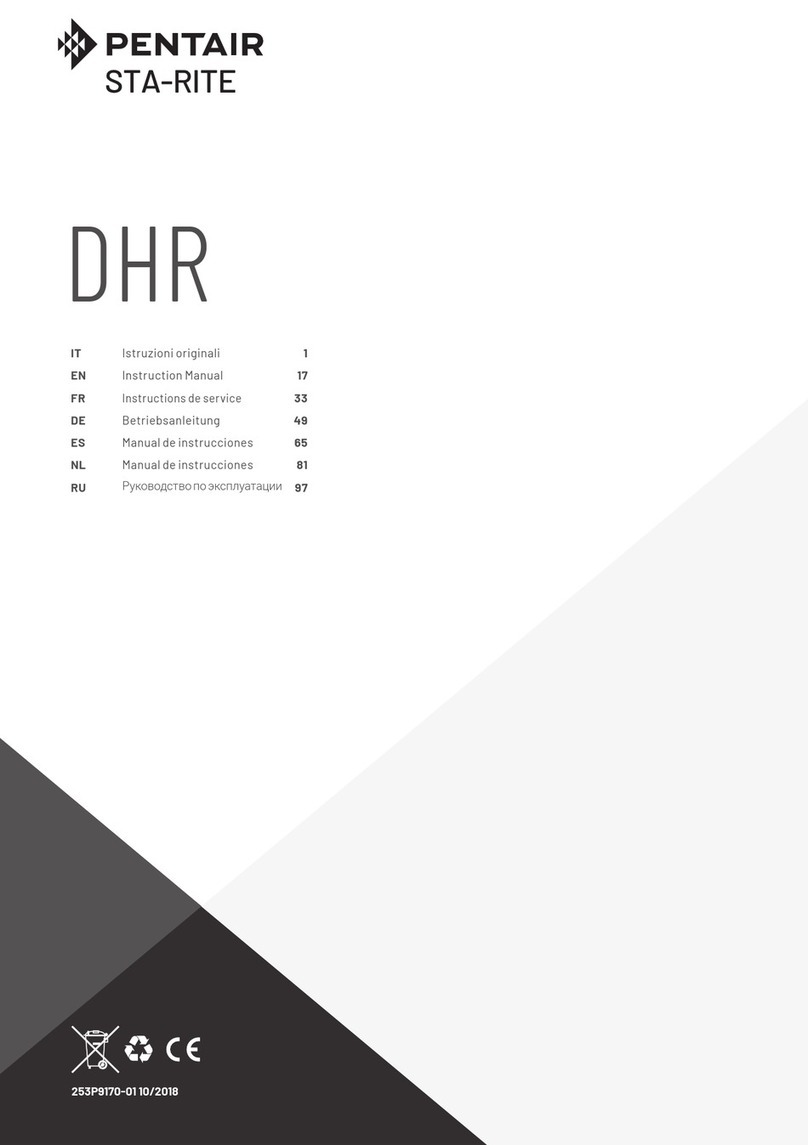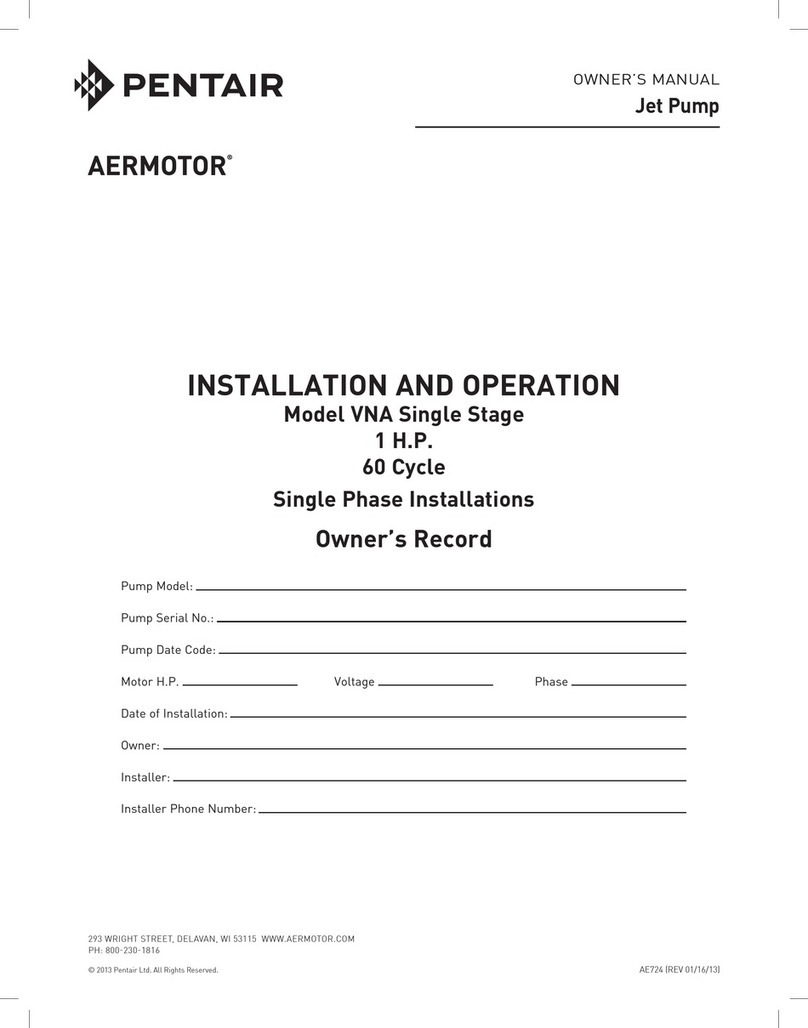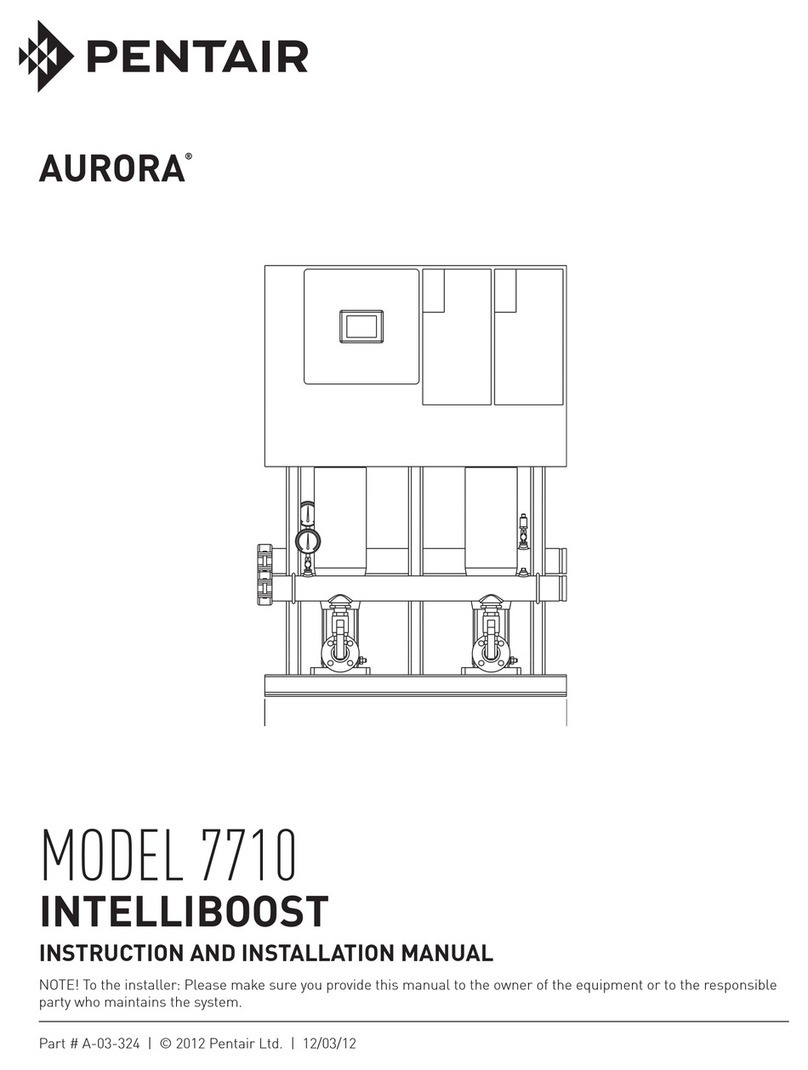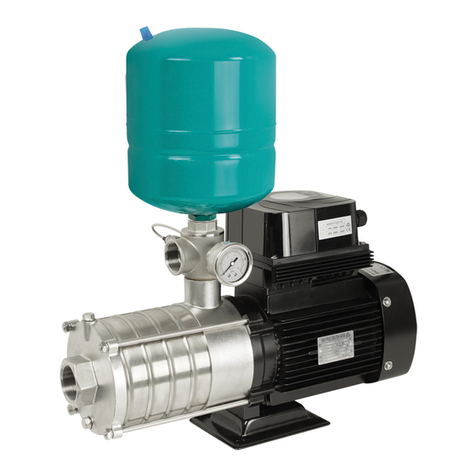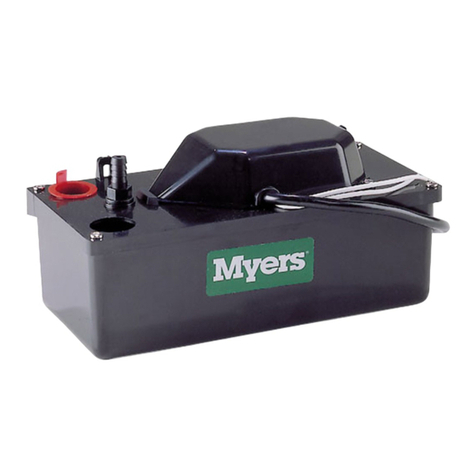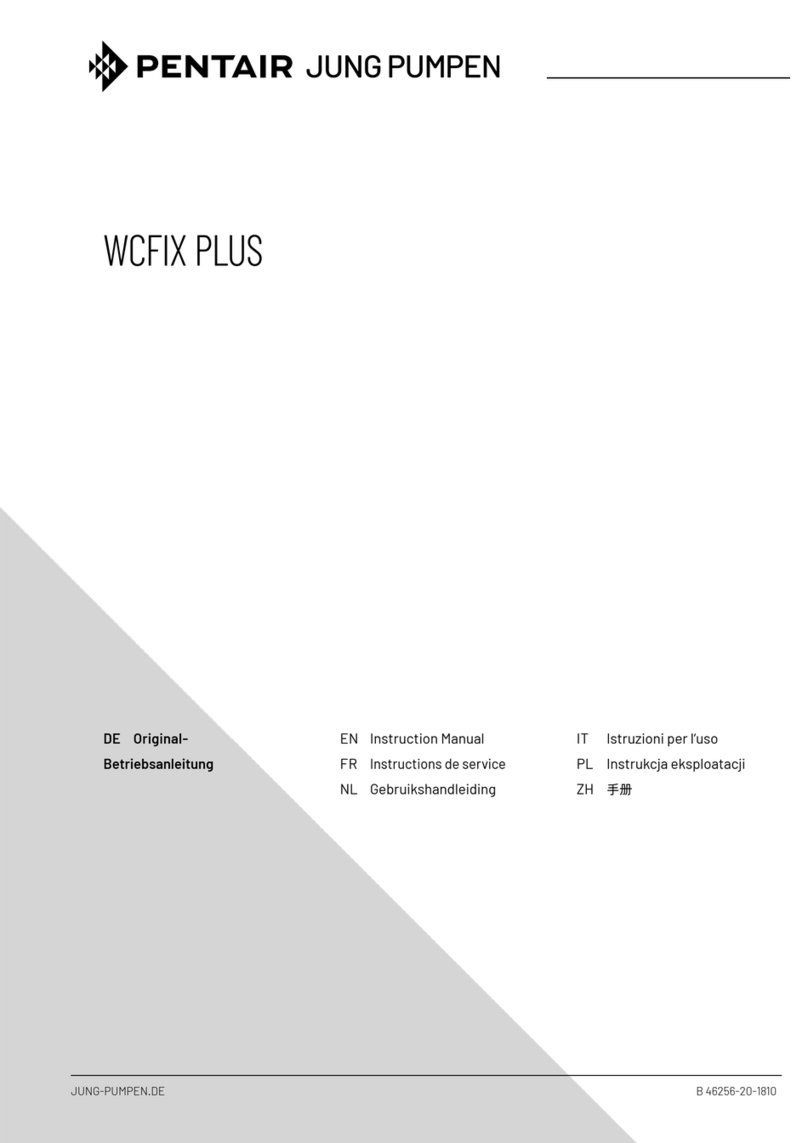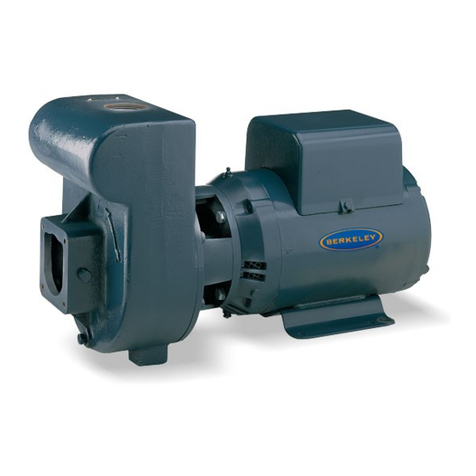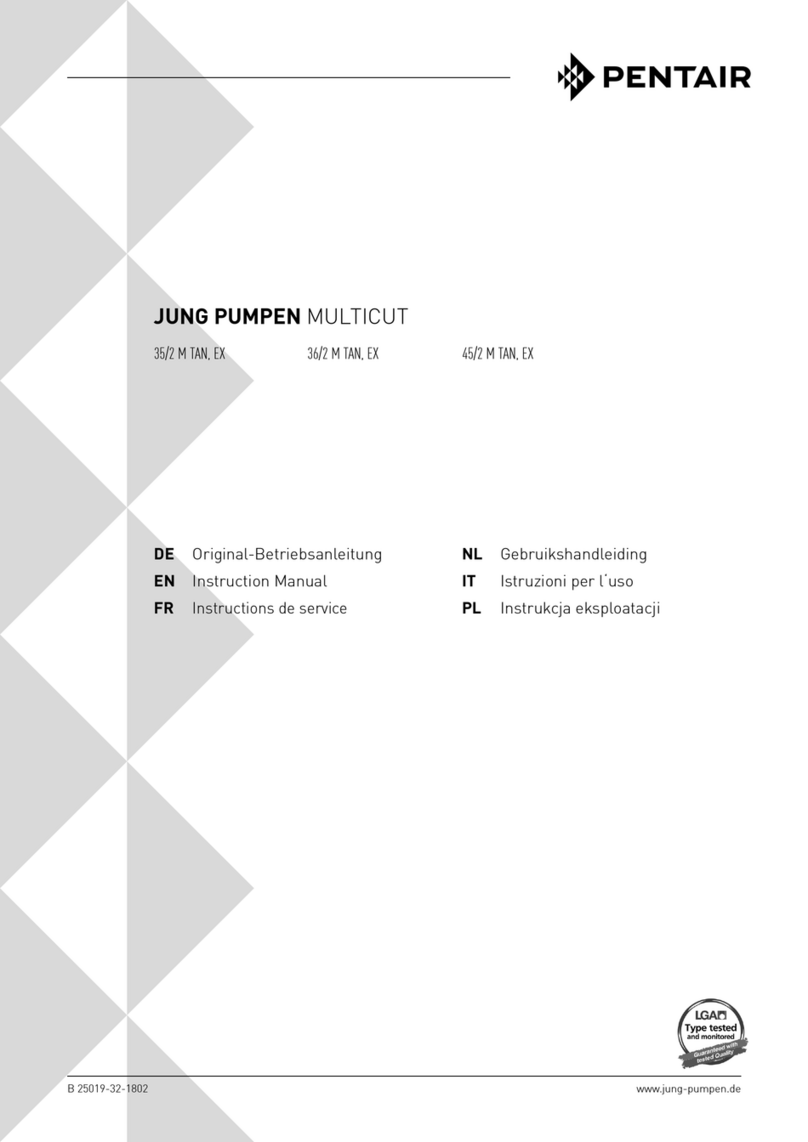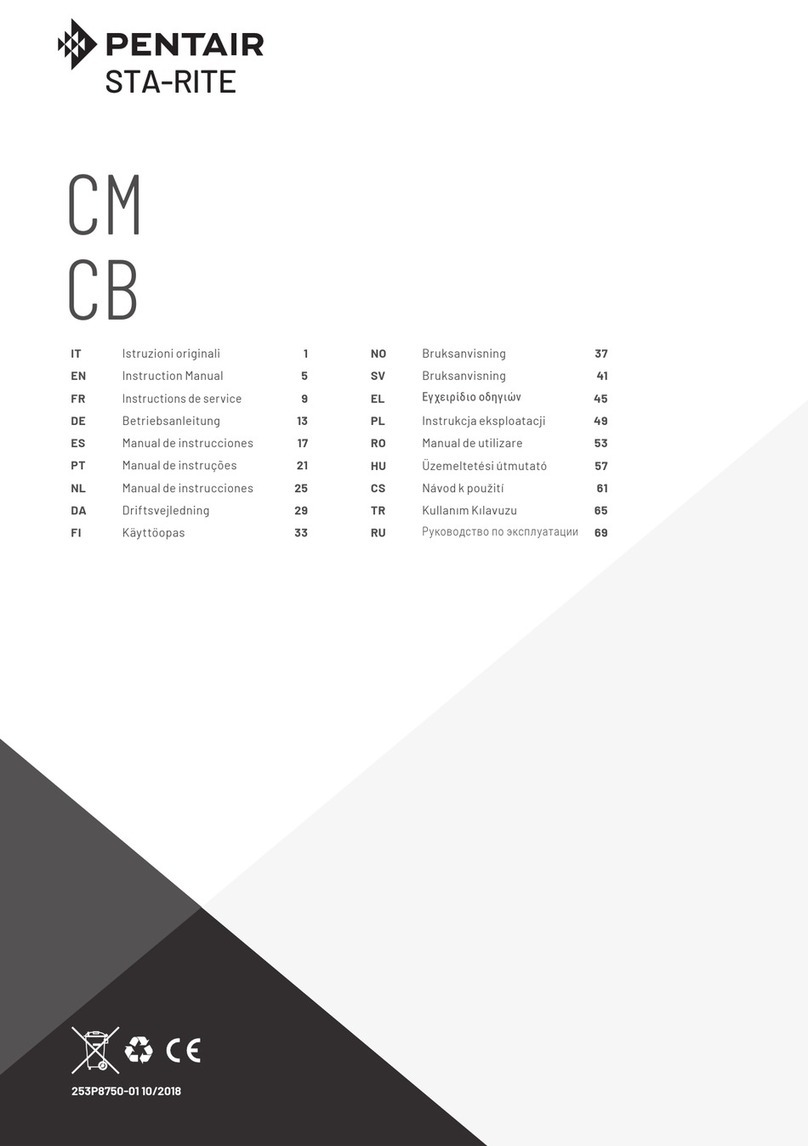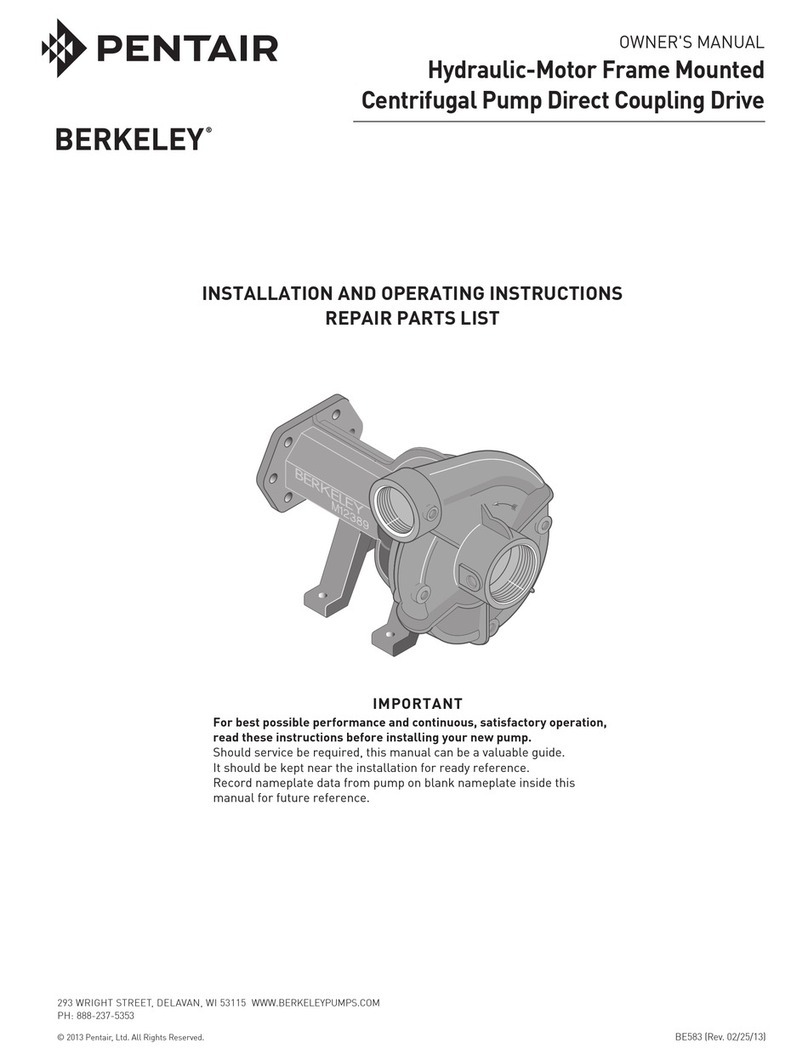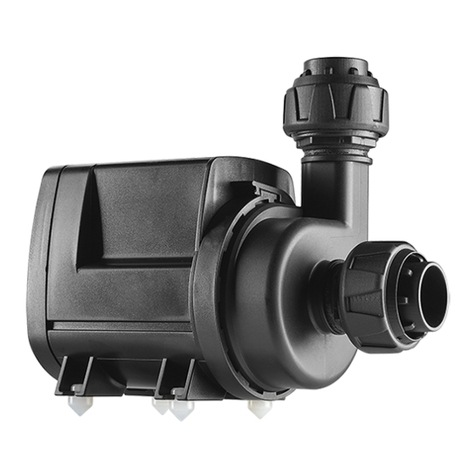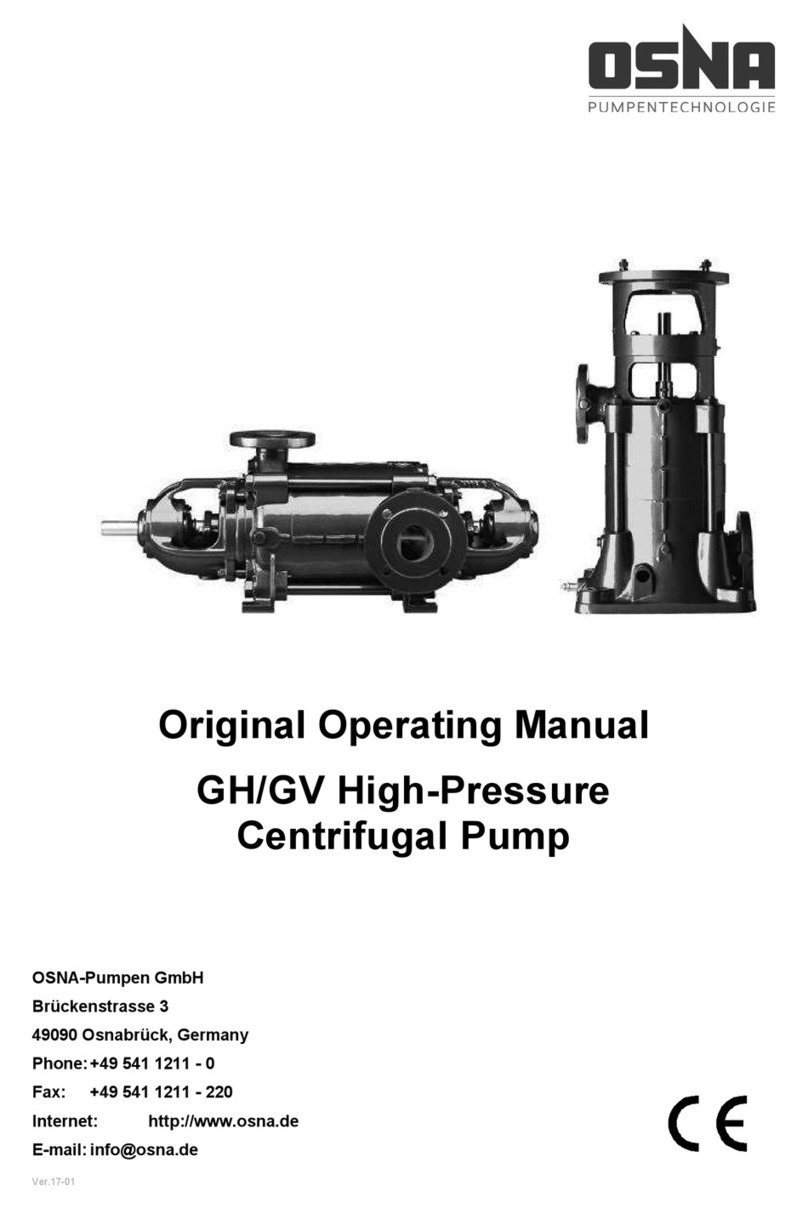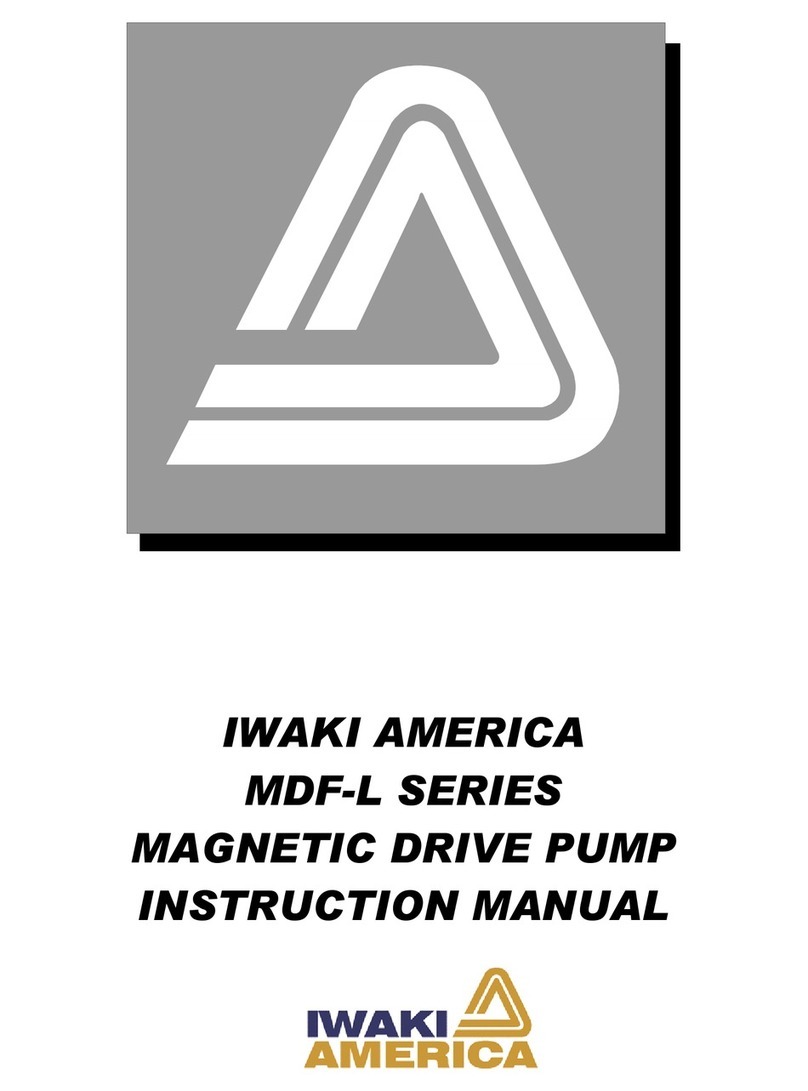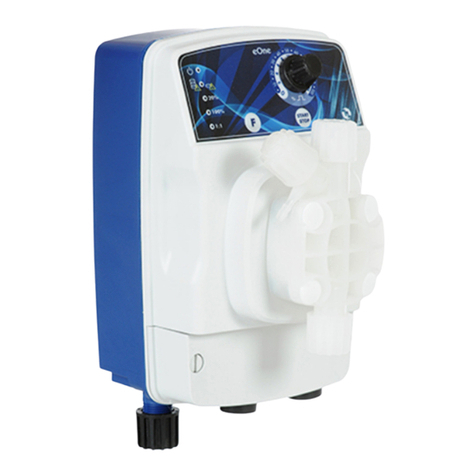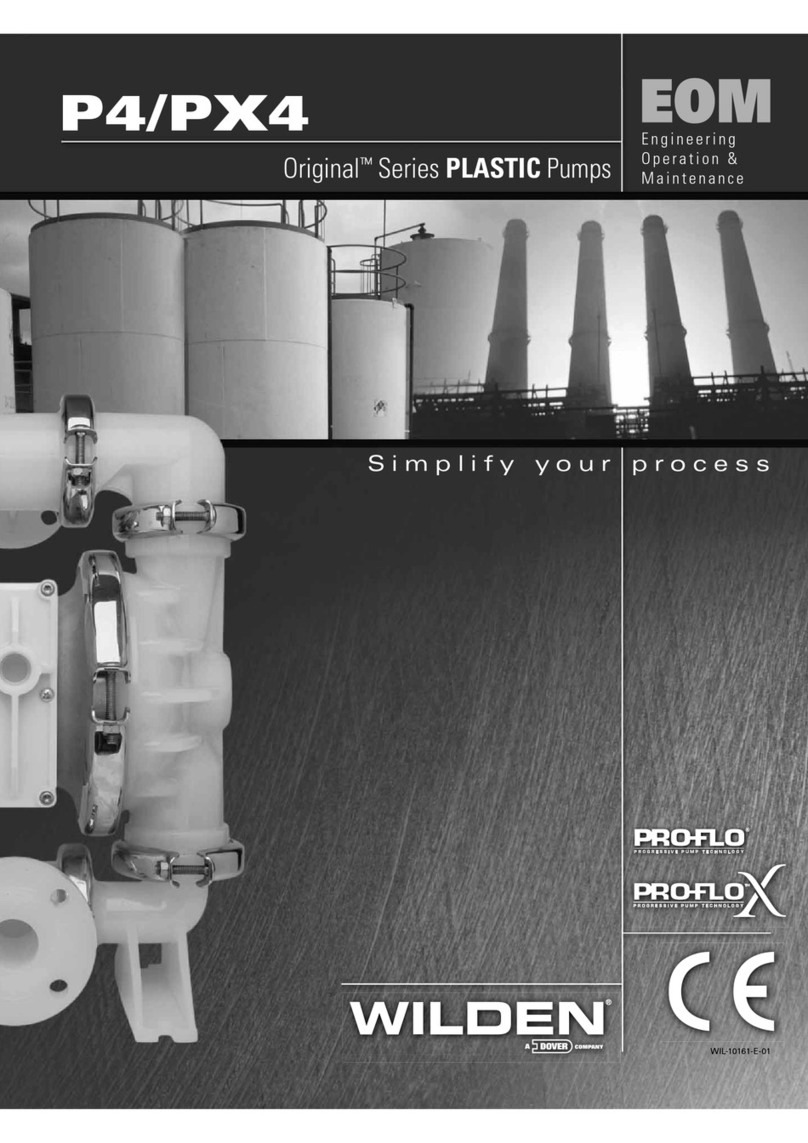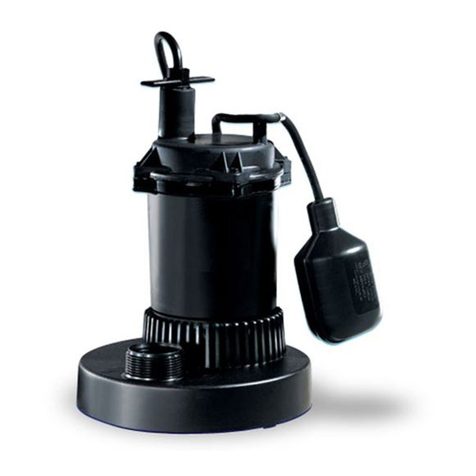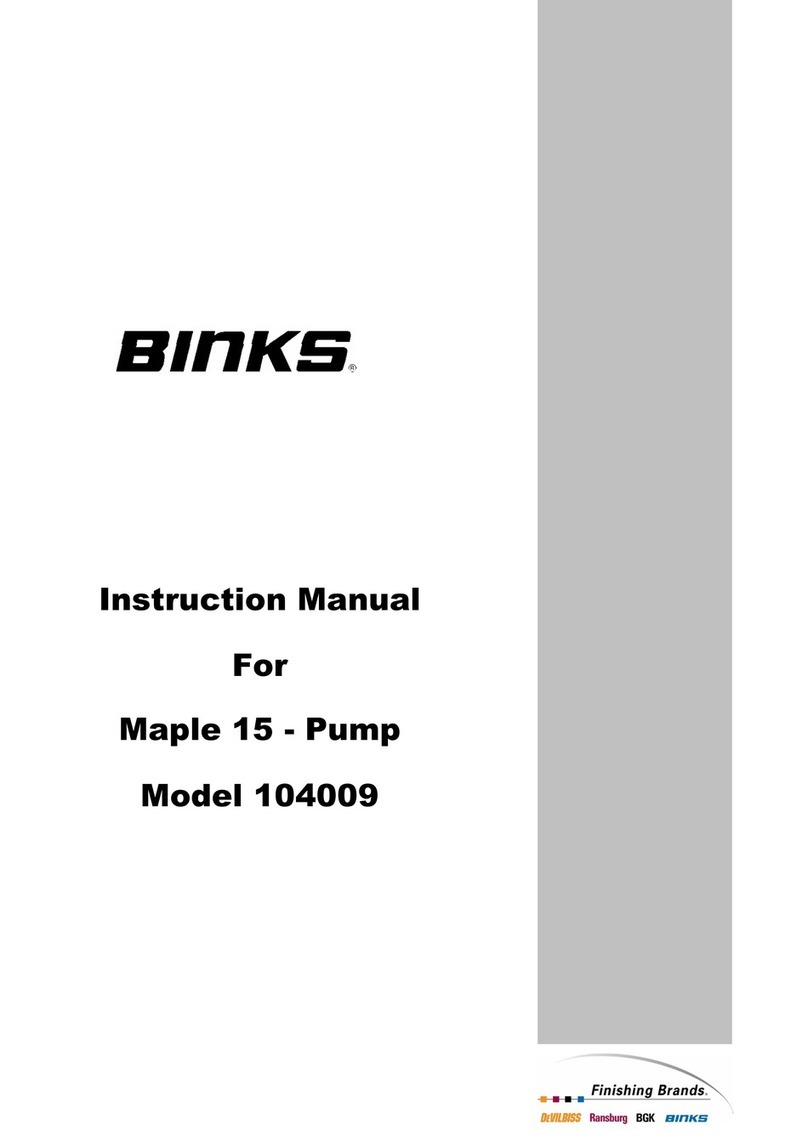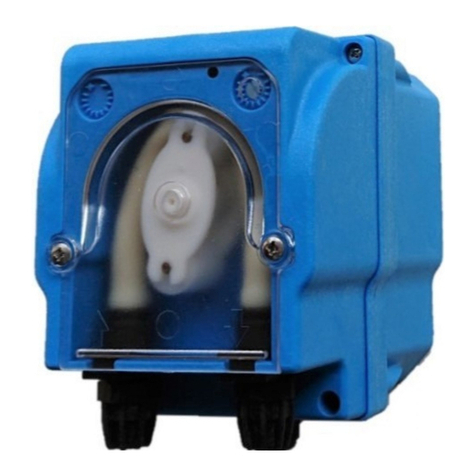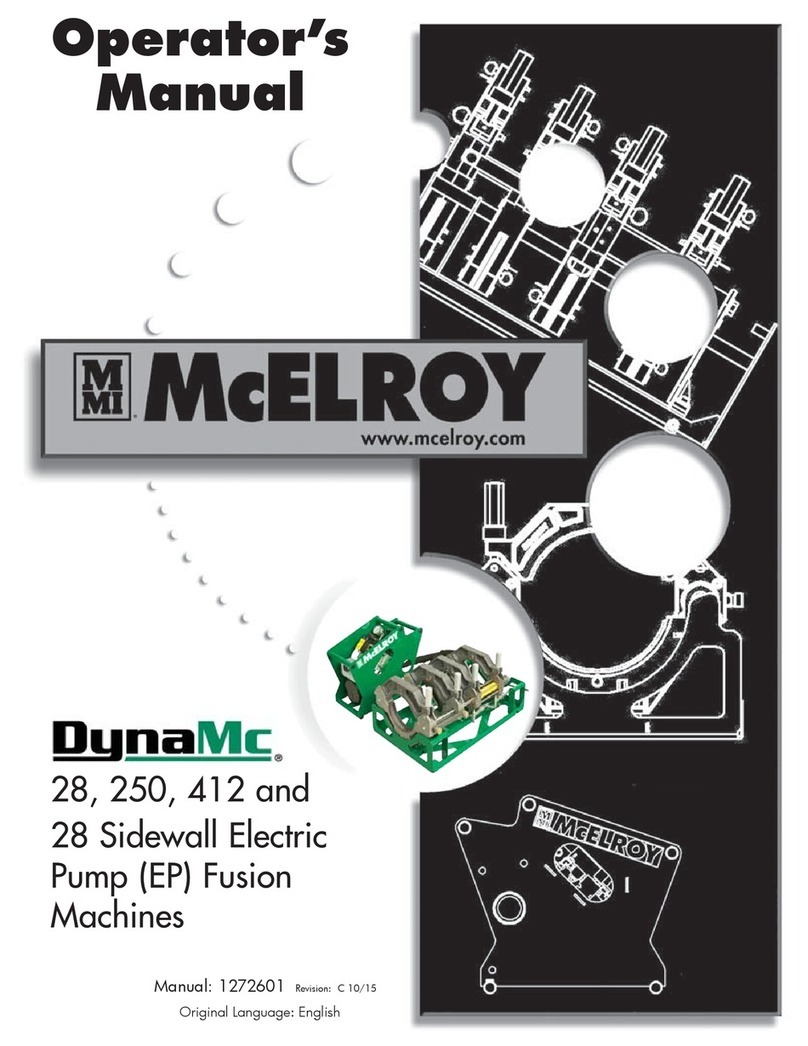
MY12736 / 23833A737 (11/01/22)
4
GENERAL INFORMATION
This manual contains important information for the safe use of
this product. Read completely and do not throw away.
Reasonable care and safe methods should be practiced. Check
local codes and requirements before installation.
UNPACKING PUMP
When unpacking unit, check for damage. Claims for damage must
be made at the receiving end through the delivery carrier. Damage
cannot be processed from the factory.
Before handling these pumps and controls,
always disconnect the power first. Do not smoke or use sparkable
electrical devices or flames in a septic (gaseous) or possible
septic sump.
PUMPS IN STORAGE OR NOT OPERATING
Pumps with silicon/carbide seals must have impellers manually
rotated (6 revolutions) after setting non-operational for 3 months
or longer and prior to electrical start-up.
Pumps with tungsten carbide seals must have impellers
manually rotated (6 revolutions) after setting non-operational
for 3 weeks or longer and prior to electrical start-up.
SEAL FAILURE PROBES
All submersible pumps have two factory installed moisture
detectors (seal failure probes). They are in a normally open
series circuit in the seal chamber. Under normal operating
conditions, the circuit remains open. If the lower seal leaks and
moisture enters this chamber, the moisture would settle to the
bottom of the chamber and will complete the circuit between
the moisture detectors.
This circuit must be connected to a sensing unit and signaling
device. This is supplied in a manufacturer built control panel.
Failure to install such a device negates all warranties.
HEAT SENSORS
All motors in this family have heat sensors on or embedded in the
motor winding to detect excessive heat. This prevents damage to
the motor. If sensor trips due to excessive winding temperature,
the starter in the panel interrupts power to the pump. The
sensors are set to trip at 150°C.
Failure to install such circuitry would negate FM approvals and
all warranties.
POWER CORDS
The power cord and heat sensor seal failure cord are potted into
the cord cap. The cords must not be spliced.
Each cable has a green lead. This is the ground wire and must be
grounded properly per NEC and/or local codes. Cords should be
inspected for abnormal wear and replaced accordingly.
OVERLOAD HEATERS
If the electrical panel is not used, starters with 3 leg overload
relay must be supplied on 3 phase pumps. Each leg is to have an
identical heater sized in accordance with the nameplate amps on
the motor housing. The amp draw on these submersible motors is
slightly higher than a corresponding horsepower surface motor,
so heaters must be sized by the nameplate rating.
INSTALLING SUMP LEVEL CONTROLS FLOAT CONTROLS
In all systems, the lower or turn-off control is to be set to
maintain a minimum level in the sump. This level shall be no
more than 3-1/4" from the top of the motor housing down to the
surface of the sewage.
The second or turn-on control is set above the lower turn-off
control. The exact distance between the two floats must be a
compromise between a frequent pumping cycle (15 starts per
hour max) to control septicity, solids and a slower cycle for energy
economy. This distance should be determined by the engineer or
consulting engineer, depending on the conditions of
the application.
INSTALLING PUMP IN SUMP
Before installing the pump in the sump, lay it on its side and rotate
impeller. Impeller may be slightly stuck due to factory test water.
The impeller should turn freely. DO NOT connect the power until
after this test.
Clean all debris from sump and connect pump to piping. A check
valve must be installed on each pump and a gate or plug valve in
each pump discharge is highly recommended. This valve should be
installed on the discharge side of the check valve so if it becomes
necessary to service the check valve, the line pressure can be
cut off. Single pump systems are sometimes installed without a
check valve where it is desirable to self-drain the discharge line to
prevent freezing. This can be done only with short discharge lines;
otherwise water will return to the sump and cause short cycling of
the pump.




















